India to soon launch open e-commerce network to rival Amazon, Walmart
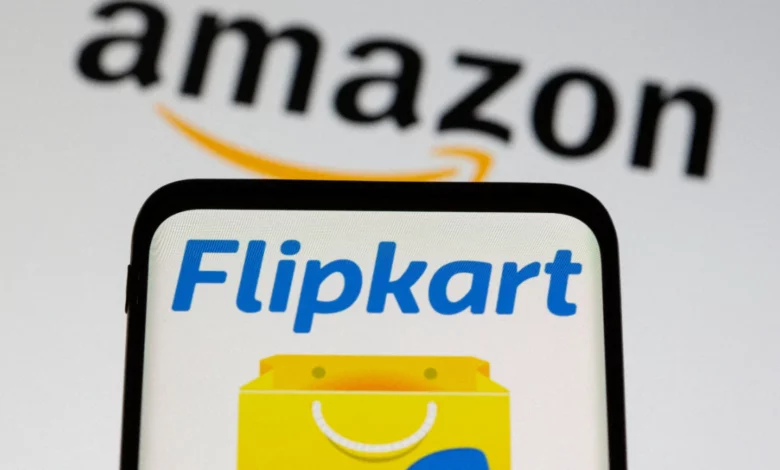
India to soon launch open e-commerce network to rival Amazon, Walmart
The Indian government plans to build an Open Network for Digital Commerce to challenge Amazon and Walmart’s dominance in the Indian market. Buyers and sellers will be able to engage and transact online using the ONDC platform. The introduction of the ONDC platform follows an antitrust raid by India’s antitrust commission on Amazon’s domestic vendors and Walmart’s Flipkart. The business was accused of breaking the law.
The government hopes to create an open platform for the exchange of products and services over electronic networks with the introduction of ONDC. According to an official, the open network platform would be deployed in five cities: Delhi NCR, Bengaluru, Bhopal, Shillong, and Coimbatore. Later on, it would be spread to additional cities.
According to a Reuters story, the Modi government and its major backers have long claimed that Amazon and Flipkart’s predatory pricing benefits only a few big vendors. On the other hand, the firms have always maintained that they follow the Indian government’s laws.
The government’s ONDC platform has yet to elicit a response from Amazon and Flipkart. According to the study, India’s ONDC plan intends to onboard 30 million online dealers and 10 million online merchants. By August, the goal is to have covered at least 100 cities and towns. The government will concentrate on apps for buyers and dealers that are available in local languages. Small businesses and rural customers would be highlighted in the apps.
The government stated in a document that retailers and venture capital firms had backed the ONDC idea. State Bank of India, ICICI Bank, and Bank of Baroda have already pledged 2.55 billion rupees in total investments.
According to a Reuters investigation last year, Amazon was accused of giving a certain set of vendors on its preferential platform treatment for years and using them to circumvent Indian rules. Amazon disputed the charges.
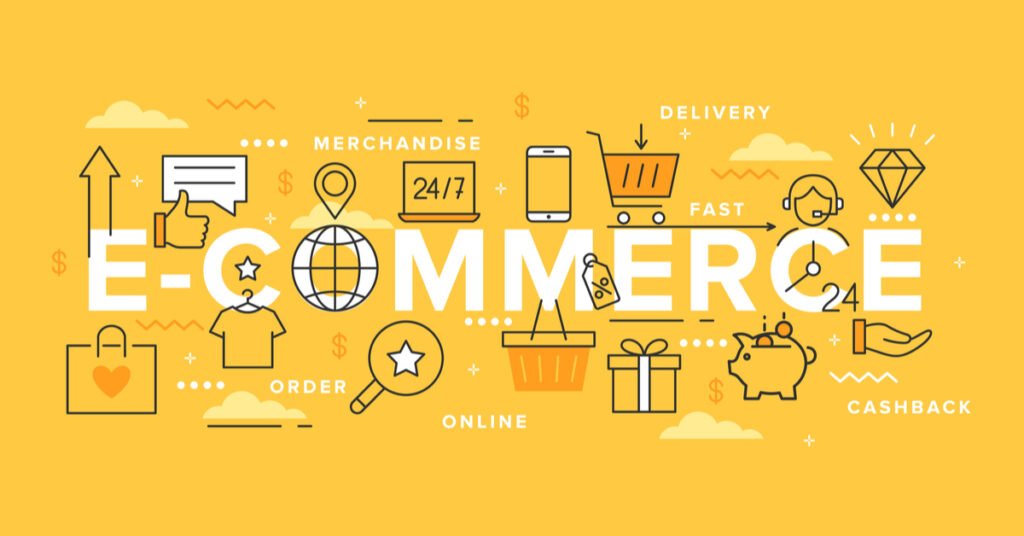
Electronic Commerce
The term “e-commerce” refers to the purchasing and selling of goods, products, and services over the internet. Electronic commerce or internet commerce are other terms for e-commerce. These services are delivered through the internet network. E-commerce also includes the exchange of money, funds, and data. Commercial to Business, Business to Customer (B2C), Customer to Customer, and Customer to Business (C2B) are the four types of business interactions (C2B).
According to the conventional definition, E-commerce is a commercial transaction that takes place over the internet. E-commerce websites include Amazon, Flipkart, Myntra, eBay, Quikr, and Olx. Global retail e-commerce might be worth $27 trillion by 2020. Let us take a closer look at the benefits and drawbacks of E-commerce and its various forms.
E-Commerce or Electronic Commerce
Electronic commerce, or even internet commerce, is referred to as e-commerce. The name is self-explanatory; it is an online marketplace for buyers and dealers. This includes the exchange of goods and services and the transfer of finances and data.
So, when you log into your Amazon account and buy a book, you’re engaging in an e-commerce transaction. You engage with the seller (Amazon) here and exchange data in the form of photographs, text, shipping addresses, and so on before making the payment.
E-commerce is currently one of the fastest expanding industries in the world economy. According to one estimate, it grows at a rate of approximately 23% every year.
And it is projected to be a $27 trillion industry by the end of this decade.
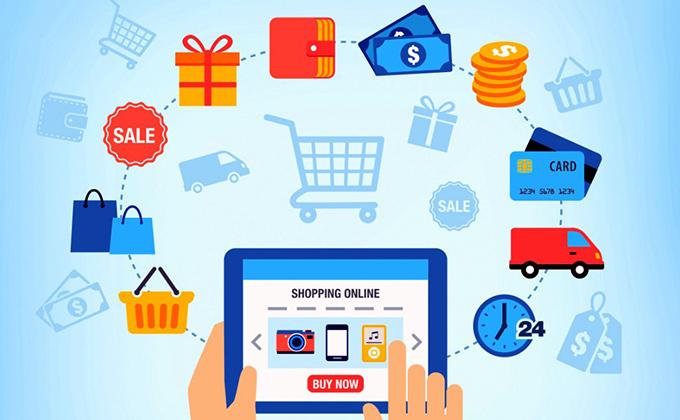
Types of E-Commerce Models
1. Business to Business
This is an example of a business-to-business transaction. Businesses interact with one another in this area. In no way is the final customer involved. As a result, internet transactions are limited to manufacturers, distributors, and retailers.
The company will sell its goods and/or services to the consumer directly here. Consumers can browse their websites and look at products, pictures, and reviews. After that, they place their order, and the company ships the products to them directly. Amazon, Flipkart, and Jabong are just a few examples.
2. Customer to Consumer
The term “consumer to consumer” describes circumstances in which two or more people communicate directly with one another. There is no firm involved. It allows users to sell their personal belongings and assets to purchasers directly. Cars, bikes, electronics, and other such items are frequently traded. OLX, Quikr, and others follow this model.
3. Consumer to Business
This is the polar opposite of B2C; it is a consumer to business relationship. The customer gives the business a product or a service. Consider an IT freelancer who provides a corporation with a demo and sells his product. This would be a business-to-business transaction.
Examples of E-Commerce
· Amazon
· Flipkart
· eBay
· Fiverr
· Upwork
· Olx
· Quikr
Advantages of E-Commerce
• Vendors can access a global audience through e-commerce. They are tearing down the geographical barrier.
• Thanks to internet commerce, transaction costs will be greatly decreased. It reduces many of the fixed costs associated with running a physical store. As a result, the companies will be able to enjoy a much higher profit margin.
• It ensures that items are delivered fast and with little effort on the part of the client. Customer concerns are also addressed right away. It saves time, energy, and effort for both customers and enterprises.
• Another significant benefit is the convenience it provides. A client can shop 24 hours a day, seven days a week.
• Electronic commerce also allows customers and businesses to communicate directly with one another without the use of intermediaries. This facilitates communication and transactions. It also adds a touch of personalisation.
Disadvantages of E-Commerce
• The startup costs for an e-commerce platform are fairly substantial. The cost of setting up the equipment and software, as well as employee training, maintenance, and upkeep, are all considerable.
• The e-commerce industry has a significant failure rate, despite the fact that it looks to be a sure thing. Many firms that attempted to profit from the dot-com craze of the 1990s failed miserably. Even now, there’s a good chance of failure.
• At times, e-commerce might feel impersonal. As a result, it lacks the comfort of a human connection, which is essential for many businesses and products. The lack of personal touch may be a disadvantage for many services and products, such as interior design or jewellery.
• Another source of concern is safety. We’ve recently observed a number of security incidents involving the theft of client information. Customers are concerned about identity theft, credit card theft, and other concerns.
• There are also fulfilment issues. Shipping, delivery, mix-ups, and other issues might arise even after an order has been placed.

E-commerce in India
India’s Internet user base is expected to reach 636.77 million by May 2020, accounting for around 40% of the country’s population. Despite having the world’s second-largest user base, only behind China (650 million, or 48% of the population), e-commerce penetration is low when compared to economies such as the United States (266 million, or 84%) and France (266 million, or 84%). (54 million, 81 per cent). It continues to grow, with approximately 6 million new entrants per month. The prevailing consensus in the industry is that growth is approaching a turning point.
India’s most common payment method is cash on delivery, which accounts for 75% of all e-commerce purchases. The demand for imported consumer products (especially long-tail items) surpasses the supply from authorised distributors and e-commerce platforms in the country. The longing-tail business approach allows businesses to make considerable profits by selling small quantities of hard-to-find things to many clients rather than selling huge quantities of a small number of popular items. In 2004, Chris Anderson coined the term.
In 2017, India’s three largest e-commerce companies were Flipkart, Snapdeal, and Amazon. In terms of revenue, Amazon beat Flipkart as India’s top eCommerce company in 2018. During the festive retail season in 2020, Flipkart outsold Amazon by roughly two to one.
Market size and growth
In 2009, India’s e-commerce market was valued at $3.9 billion. According to Avendus Capital’s research “India Goes Digital,” the Indian e-commerce business is predicted to be worth $6.3 billion in 2011. Today, online travel accounts for a significant percentage of the market (87 per cent). In India, the online travel market grew at a 22 per cent annual rate during the next four years, reaching $54,800 crore ($12.2 billion) in 2015. In 2011, the Indian e-tailing market was valued at 3,600 crores ($800 million) and was expected to expand to 53,000 crores ($11.8 billion) by 2015.
In 2013, the market was valued at $12.6 billion. The e-retail market was worth $2.3 billion in 2013. In 2013, travel accounted for almost 79 per cent of India’s e-commerce market. According to Google India, there were 35 million online shoppers in India in the first quarter of 2014, with the number predicted to reach 100 million by the end of 2016.
CAGR compared to a global growth rate of 8–10%. In terms of sales, the most popular categories are electronics and apparel. By 2015, the global e-commerce market had grown to 1,07,800 crores (US$24 billion), with online travel and e-tailing both contributing equally. Mobile/DTH recharge is another important e-commerce category, with almost 1 million transactions each day on operator websites.
The year 2016 saw an increase in online sales of luxury items such as jewellery. Most retail brands have also begun to enter the industry, with most expecting at least 20% online sales in the next 2–3 years. According to Google India Research, India will generate $100 billion in online retail income by 2021, with $35 billion coming from fashion e-commerce.
In 2017, the eCommerce industry was valued at $24 billion, making it India’s fastest-growing industry. In 2018, the eCommerce market reached $38.5 billion. One out of every three Indian stores via smartphone and internet merchants is anticipated to deliver 20,000 pin-codes out of India’s 100,000 pin-codes.
According to Goldman Sachs, India’s e-commerce business will be worth $99 billion by 2024, with online shopping predicted to more than double from 4.7 per cent in 2019 to about 11 per cent by 2024, growing at a 27 per cent compound annual growth rate (CAGR). According to Google India Research, India will generate $100 billion in online retail income by 2021, with $35 billion coming from fashion e-commerce.
In 2017, the eCommerce industry was valued at $24 billion, making it India’s fastest-growing industry. In 2018, the eCommerce market reached $38.5 billion. One out of every three Indian stores via smartphone and internet merchants is anticipated to deliver to 20,000 pin-codes out of India’s 100,000 pin-codes.
According to Goldman Sachs, India’s e-commerce business will be worth $99 billion by 2024, with online shopping predicted to more than double from 4.7 per cent in 2019 to about 11 per cent by 2024, growing at a 27 per cent compound annual growth rate (CAGR). During the lockout, Amazon saw a fourfold rise in page visits and a fourfold increase in “Add to Cart,” resulting in a doubling of sales. It also began providing auto insurance in collaboration with Acko General Insurance, which is accessible via the Amazon app and mobile website.
With the addition of ten new warehouses, Amazon now has 60 warehouses in India, spanning 15 states and covering more than 100 football fields.
According to a report by software as a service (SaaS) vendor Unicommerce, e-commerce penetration is rising beyond tier-1 cities, with tier-2 and tier-3 towns/villages seeing the most development due to increased vernacular language content and improved last-mile delivery. Consumers are also shifting their buying habits away from large-scale e-commerce platforms like Amazon and Flipkart and toward specialised retail brand websites.
According to Goldman Sachs, given the size of India, three or four e-commerce giants can coexist. Still, travel, food delivery, and ride-hailing services will see a maximum of two competitors taking the market. In grocery, finance, online retail, and food delivery, Reliance Jio will enhance competition. During the Covid19 lock-down period from February to June 2020, e-commerce climbed by 117 per cent, with only essential supplies being delivered, which is currently higher than the pre-Covid19 level.
Flipkart has reached 1.5 billion monthly visits, with a 45 per cent increase in monthly active users and a 30% increase in transactions per customer. Tier-3 markets are growing by 53% year over year, thanks to increased internet adoption and connection. Kinetic Green began selling electric auto-rickshaws and golf carts online in eastern and northern India in 2019 with a revenue of 75 crore, which has now increased to 100 crore as of August 2020. Nestlé increased sales by 122 per cent during the second quarter of 2020-21, accounting for 3.6 per cent of total sales. In time for the festival season, Apple Inc. will launch an online store in India for the first time in August 2020.
Closures
Despite the fact that the sector has seen and is likely to continue to develop, many e-commerce businesses have faced significant challenges in maintaining cash flow. However, it hasn’t worked for all e-commerce sites. To survive, many of them, including Dhingana, IndiaPlaza.in, eBay-India, Rock.in, and Seventy MM, had to shut down or restructure their business strategies.
The Indian government barred online sales of all goods except necessary items such as food, medications, and medical equipment in March 2020. Due to the COVID-19 pandemic, many Indian companies, including Urban Company, BookMyShow, Pepperfry, and Nykaa, which were not on the government’s list of declared vital services, were losing money.
Collaborations
The Indian government issued a directive to e-commerce companies to halt delivering non-essential commodities in the wake of the Covid-19 pandemic.
As a result, many e-commerce sites have sprung up to collaborate and sell necessities. For example, Myntra and Wildcraft collaborated to market protective face masks. Rossari Biotech Ltd teamed with McCoy Mart to market hand sanitisers. Flipkart has teamed with Uber to deliver basics to its consumers at the last mile.
Infrastructure
In India, there are numerous hosting firms, some of which provide SaaS for hosting web stores. The Great Online Shopping Festival, which began in December 2012 when Google India teamed with e-commerce companies such as Flipkart, HomeShop18, Snapdeal, Indiatimes Shopping, and Makemytrip, has become India’s own version of Cyber Monday. “Cyber Monday” is a word used in the United States to refer to the Monday following Black Friday, which is the Friday following Thanksgiving Day. The 2018 GOSF Great Online Shopping Festival took place in December.
Without any marketing initiatives, Amazon.com started its Amazon India marketplace in early June 2013. After its major Indian rival, Flipkart, disclosed $1 billion in fundraising in July 2014, Amazon declared it would invest $2 billion (Rs 12,000 crore) in India to expand the business. Amazon pledged to invest another $3 billion in June 2016 to put more pressure on rivals Flipkart and Snapdeal.
Amazon has entered the grocery market with its Kirana service, which is already available in Bangalore and plans to expand to additional cities such as Delhi, Mumbai, and Chennai, where it will face fierce competition from Indian companies. Coupon sites attract a significant amount of traffic to e-commerce sites.
Funding
The following are some examples of venture capital firms that have invested in Indian e-commerce companies: Flipkart.com received a total of USD 2.3 billion in funding. Flipkart announced on July 10, 2013, that it had received $200 million from existing investors Tiger Global, Naspers, Accel Partners, and ICONIQ Capital, as well as $160 million from Tiger Global, which included Dragoneer Investment Group, Morgan Stanley Wealth Management, Sofina, Vulcan Inc., and others.
Myntra.com, an online clothes store, obtained $50 million in February 2014 from a group of investors led by Premji Invest, the investment business founded by Wipro Chairman Azim Premji. Flipkart reportedly purchased Myntra for 2,000 crores in May 2014.
PepperTap secured $36 million from Snapdeal and others in September 2015.
Purplle raised $30 million from Goldman Sachs and others in July 2020.
B2B Udaan raised $280 million in January 2021 from existing investors Lightspeed Venture Partners, DST Global, GGV Capital, Altimeter Capital, Tencent Holdings, and new investors Moonstone Capital Partners and Octahedron Capital.
Niche retailers
The growth of e-commerce has resulted in the emergence of a number of niche firms that focus their products on a single theme. Every day, 1,06,086 new websites are registered, with more than 25% of them being for niche enterprises.
Royal Enfield sold 200 special series motorcycles online in 2014.
Online clothes are among the most popular verticals, accounting for 42 per cent of total retail e-commerce sales, along with computers and consumer electronics. Headbanger’s Merch, Redwolf, and No Nasties are examples of niche online merchandising brands that work with and even support independent bands. Some well-known manufacturers, such as Arvind, are already developing clothing lines specifically for the e-commerce sector.
Some of the larger online retailers, such as VoxPop Clothing, have raised money in multiple rounds, the most recent of which raised $1 million from Blume Ventures in 2014.
As these niche enterprises grow in popularity, they are gradually being acquired by larger corporations. Mahindra Retail, part of the $17 billion Mahindra Group, bought BabyOye. The Godrej Group purchased Ekstop to supplement its offline Nature’s Basket shop business.
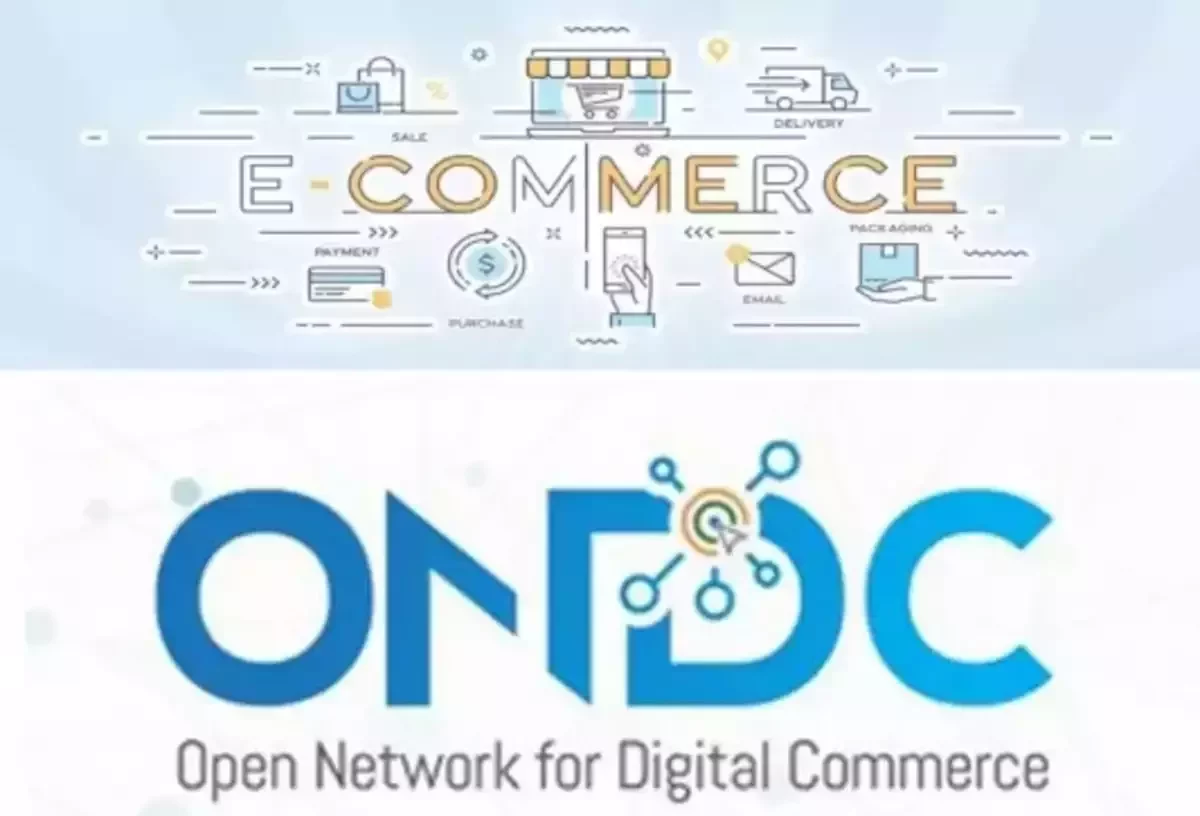
What is Open Network for Digital Commerce
The ONDC programme, led by the commerce ministry, aims to promote open networks for all goods and service exchange elements using digital or electronic networks. ONDC will be platform agnostic and built on an open-source approach, with open standards and open network protocols.
‘As UPI is to digital payments, ONDC is to e-commerce in India,’ according to the government. The program aims to democratise digital commerce by moving it away from a platform-centric model and toward an open-network model. ONDC would work on both products and services, according to Union Commerce and Industry Minister Piyush Goyal.
How will ONDC work
1. ONDC goes beyond the present platform-centric digital commerce model. Both the buyer and the vendor must utilise the same platform or application to be digitally visible and conduct business.
2. Open protocols for all aspects of the entire chain of activities in the exchange of goods and services, similar to hypertext transfer protocol for information exchange over the internet, simple mail transfer protocol for email exchange, and unified payments interface for payments, are the foundations of ONDC, according to the Commerce Ministry.
3. These open protocols would be used to create public digital infrastructure in the form of open registries and open network gateways, allowing providers and consumers to exchange information.
4. Providers and customers would be able to communicate information and conduct transactions over ONDC using any compatible application of their choice.
What are the potential benefits of ONDC?
For sellers:
1. Access to more buyers
2. Better discoverability of products and cost
3. Autonomy on terms because of multiple choices for being digitally visible
4. Lower cost of doing business
For buyers:
1. Access to more sellers and, therefore, more choices
2. Better service and faster deliveries due to access to hyper-local retailers
3. Better customer experience
What is ONDC not?
1. A government regulatory body
2. A super aggregator application or a platform
3. A central intermediary
4. A medium to help digitise business
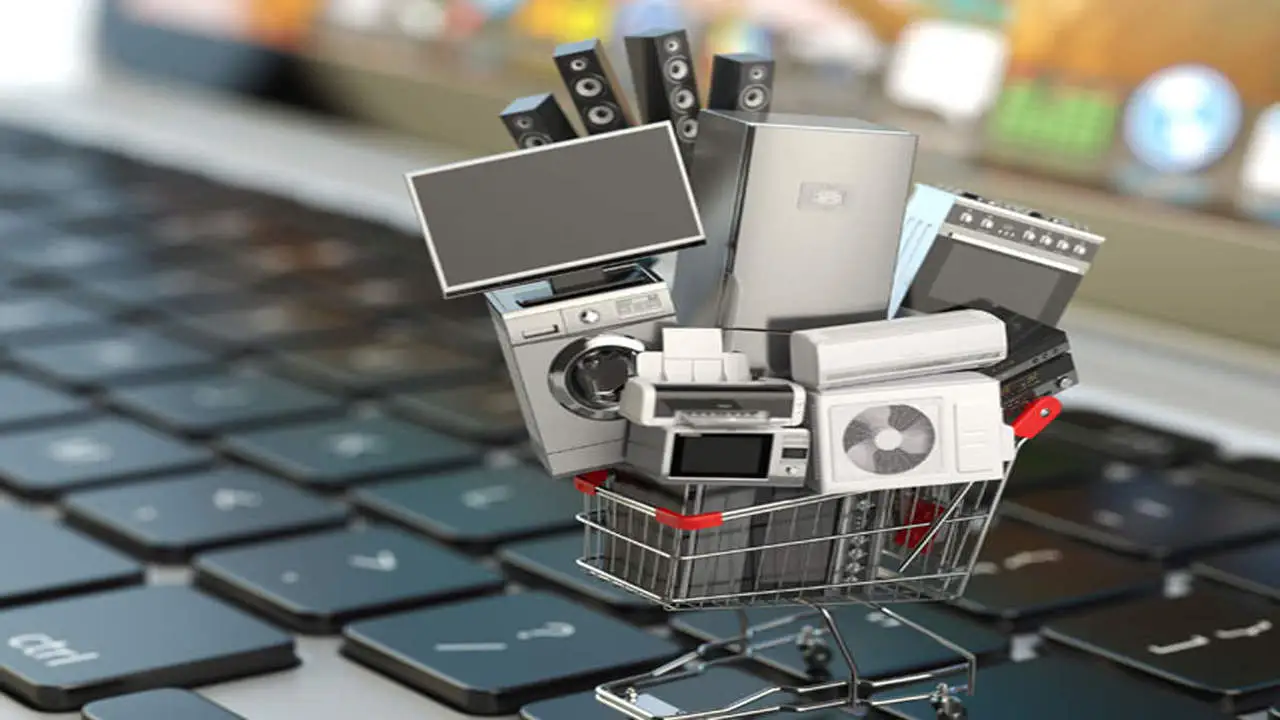
Govt to launch open network for digital commerce in five cities
According to a senior official at the Ministry of Industry and Commerce, the Open Network for Digital Commerce pilot phase will begin on Friday. The ONDC is a government effort that aims to create an open platform for all elements of electronic commerce.
The official said it would be launched in five cities: Delhi NCR, Bangalore, Bhopal, Shillong, and Coimbatore. ONDC’s dynamic pricing, inventory management, and delivery cost optimisation are three key features that assist everyone, including merchants, save money.
On December 31, 2021, ONDC got its certificate of formation as a private sector-led non-profit corporation.
A number of well-known companies have incorporated ONDC. To identify the measures needed to design and accelerate the adoption of ONDC, the government appointed a nine-member advisory council, which included Nandan Nilekani of Infosys and R S Sharma, chief executive of the National Health Service.
Consumers can find any seller, product, or service through this network by using any ONDC compatible app or platform, giving them more options. Only the biggest firms have benefited from e-commerce so far, while smaller businesses have been left behind.
Anil Agrawal, the Deputy Minister of Industry and Internal Trade Promotion, previously stated that the ONDC agreement would unify all operations, including cataloguing, inventory management, order management, and order fulfilment.



